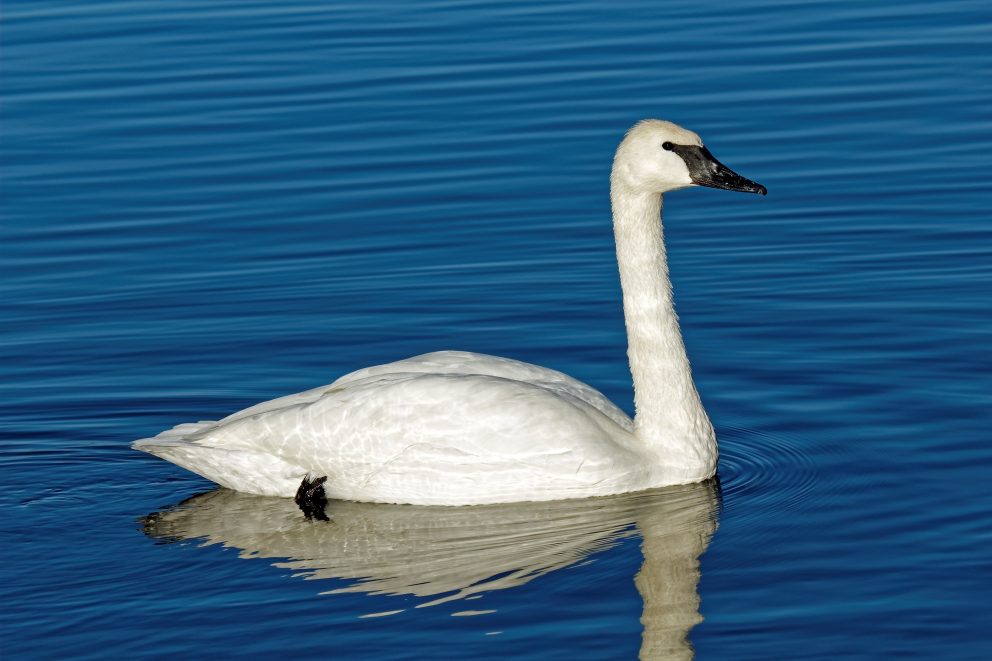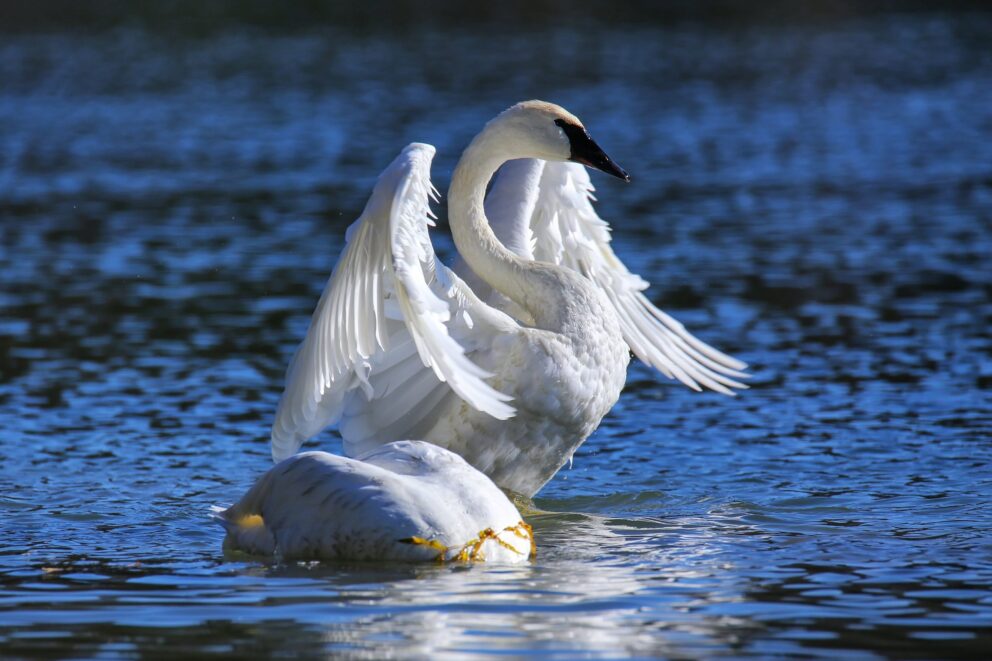- SCIENTIFIC NAME
- Cygnus buccinator
- CLASSIFICATION
- Bird
- LIFE SPAN
- 5-10 Years
- SIZE
- 4.5-5” | 16-28lbs
- STATE CONSERVATION STATUS
-
- State Protected
- FEDERAL CONSERVATION STATUS
- Least Concern
- GAME STATUS
- Game
- GAME TYPE
- Waterfowl
- Washoe
- Humboldt
- Pershing
- Churchill
- Mineral
- Lyon
- Douglas
- Carson City
- Storey
- Elko
- Lander
- Eureka
- White Pine
- Esmeralda
- Nye
- Lincoln
- Clark
Habitat & Range
Trumpeter Swans prefer shallow waters with plenty of vegetation. They will use beaver ponds and agricultural ponds as well as undisturbed bodies of water. In Nevada, Trumpeter Swans can be found in the winter across Northern Nevada. A resident population of Trumpeter Swans can be found in the Ruby Valley.
- Agricultural Lands
- Lakes and reservoirs
- Marsh
Threats
- Habitat Loss
- Lead Poisoning
- Water Diversion
Natural History
Trumpeter Swans form strong pair bonds. Both the male and the female help build the nest, but the female incubates the eggs using her feet. These swans forage in the water with their tails up in the air, looking for aquatic plants to eat. Young swans, called cygnets, primarily eat aquatic invertebrates.
Trumpeter Swans form family units and their young will stick around with their parents for at least a year before going off on their own to breed. These units will migrate together and protect each other. Trumpeter Swans can be very territorial especially during breeding season and will aggressively chase off other swans, potential predators, and any other animal that invades their space.
Fun Facts














